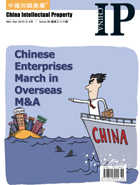Focus: IP Topics on “The Two Sessions”
By Kevin Nie,Zhou Yi,China IP,[Comprehensive Reports]
The Third Meeting of the 11th National Committee of the Chinese People’s Political Consultative Conference (CPPCC) and the Third Meeting of the 11th National People’s Congress (NPC) concluded in Beijing on March 14 and 15, thus ending the 2010 legislative session.
Topics on intellectual property from the meetings this year are well worth noting.
The Government Work Report, delivered by Premier Wen Jiabao on March 5, stressed further efforts to build an innovation-oriented country and implement an intellectual property strategy. But there were delicate changes in the details.
Firstly, the policy of, “innovation, application, administration and protection,” of intellectual property were changed to, “innovation, application and protection.” Interpretations vary about the omission of “administration.” But it is widely believed that it is a reaffirmation and representation of the Outline of the National Intellectual Property Strategy. Secondly, in the report, the intellectual property strategy was listed in the section of “science and technology work,” a change which is believed to emphasize the creation of intellectual property and to associate it more with the economy. Lastly, the words, “to further arouse the passion for innovation from science and technology workers and the whole society,” were quite touching. NPC representative Wang Longxia said, “Innovation, after all, is more about people. This remark is important because it recognizes the value of people and shows respect for talents.”
On March 11, the work report of the Supreme People’s Court and Supreme People’s Procuratorate also triggered hot discussions. The report particularly pointed out that, “In order to promote independent innovations and to guide local courts to ‘optimize the judicial environment for independent innovation,’ efforts were made to generate suggestions on the implementation of the Outline of the National Intellectual Property Strategy as well as judicial interpretations on the protection of well-known trademarks. 36,000 intellectual property cases were tried, with a year-on-year growth of 29.7%.”
Intellectual property cases were among the fastest-increasing types in 2009. Professor Li Shunde from the Intellectual Property Center of the Chinese Academy of Social Sciences told our reporter, “There are four reasons for the rapid increase in number. First, as the economy moves forward, awakened awareness of right holders leads to more disputes; second, this is a result of courts carrying out the intellectual property strategy; third, judicial solutions are more commonly sought to resolve disputes; last, under the new situation, disputes soared in certain fields such as online copyright.”
Judged from either of the reports mentioned, the number and scope of motions/proposals or the number of NPC deputies and CPPCC members discussing the IP subject, intellectual property is a focus of attention.
(Translated by Li Heng)




